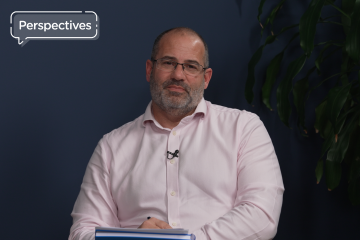


Children who experience early childhood trauma, abuse or neglect are at risk of not developing properly, which can have lasting effects on many areas of their health in the future - as the American Academy of Paediatrics details. One such area is their mental health. These children are at risk of developing profound and long-lasting mental health problems into adulthood, including complex post-traumatic stress disorder (CPTSD).
What is CPTSD?
CPTSD is very similar to PTSD in that it's a type of anxiety disorder that's related to a traumatic event that has occurred in your past. This event is the trigger of a variety of PTSD symptoms, such as reliving the trauma in nightmares and experiencing severe levels of anger, anxiety and guilt.
The risk of developing CPTSD is greater if trauma or abuse is repetitive and prolonged, involves harm or abandonment by caregivers and if it occurs at a developmentally vulnerable age such as early childhood or adolescence, which are critical periods of brain development.
CPTSD vs PTSD
CPTSD differs from PTSD in one significant way. PTSD is more typically associated with a single traumatic incident or set of traumatic events, whereas CPTSD is associated with prolonged and repeated trauma.
Find out more about CPTSD vs PTSD.
How CPTSD works
Trauma in childhood affects the development of your brain at a crucial time in your life. The amygdala, part of the limbic system, is the brain’s ‘smoke detector’ and emotional memory centre. The amygdala is triggered if it senses any kind of threat or danger and causes the brain stem to react instinctively and activate the fight, flight or freeze response. This causes an increase in heart rate, breathing rate and muscle tension.
Watch: complex PTSD explained
Join Victoria Chamorro, Consultant Psychiatrist at the Priory Hospital Roehampton, as she explains everything you need to know about complex PTSD.
The ‘thinking part of the brain’ (the neocortex), becomes less active and shuts down. At times of danger, we become overwhelmed by feelings and impulses and we don’t think about or contextualise – we simply react to the danger rather than thinking about it. This evolutionary response to danger takes the fast route via the amygdala, rather than the longer thinking route via the cortex, which has aided our survival. After the danger has passed, the normal response is for the thinking brain to then react, regulate responses, plan, problem solve, and allow arousal levels to return to baseline.
The amygdala is over-sensitive and the capacity of the thinking brain is reduced in people who've been exposed to trauma in childhood and develop CPTSD. Memories haven't been processed and fully integrated into autobiographical memory, and they remain stuck in implicit (feeling) memory. Flashbacks and reliving of the trauma happen because the amygdala has kicked in and the hippocampus has gone ‘offline’ and is unable to contextualise the memory in the moment. Traumatic memories are therefore ‘re-experienced’ rather than ‘remembered’.
The neurological systems that process emotions are significantly compromised in people who have experienced chronic childhood trauma:
- Chronic stress reduces the size and functioning in the area of the brain that processes memory
- The amygdala is overstimulated and is in constant overdrive
- High levels of cortisol make it harder to learn and block memories forming
- The brains of people with CPTSD show an enhanced sensitivity to threat and are usually in a chronic state of ‘red alert’
What does childhood trauma look like in adults? The symptoms of CPTSD
Trauma survivors can present with a wide range of problems and symptoms, ranging from physical, psychological and maladaptive coping strategies. They may report:
- Re-experiencing or reliving unwanted memories as flashbacks or nightmares
- Hyper-arousal: problems with sleep, irritability, anger, anxiety, hyper-alertness and an exaggerated startle response
- Hypo-arousal: feeling numb or cut off, feeling detached from others, dissociating, or feeling flat or empty
- Emotional dysregulation
- Negative self-concept
- Relationship difficulties
- Avoiding thinking or talking about topics that are related to their trauma
- Alcohol or substance abuse avoid and numb their feelings
- Engaging in self-harm or having suicidal thoughts
Diagnosis of CPTSD
People who have CPTSD often present with symptoms of other mental health conditions. Other conditions that patients with CPTSD might present with include eating disorders, psychosis, dissociative disorder, emotionally unstable personality disorder (EUPD), attention deficit hyperactivity disorder (ADHD) and chronic pain.
If you approach your GP or another mental health expert for a potential CPTSD diagnosis, this is what might happen in that appointment.
Practical techniques for emotional stability
- Psycho-education: much like physical education in school, psycho-education involves learning about and understanding mental health and wellbeing
- Grounding techniques: mental thought processes can help redirect your thoughts away from the distress you're feeling about a past event and bring you back to the present
- Breathing strategies: calming your body's reaction to stress and anxiety can help you to deal with symptoms in the moment when they occur
- Relaxation: mindfulness and meditations to foster a calmer self in your daily life
- Trigger awareness: techniques that help you to identify and cope with potential triggers for your symptoms
- Sleep hygiene: sleep problems are a big issue for CPTSD sufferers. Sleep hygiene allows you to be in the best possible place to sleep each night
- Understanding anger: lay the groundwork for understanding the anger you feel towards your traumatic event. This is something that therapy is especially effective at delving into
Surrounding yourself with people who know how to help someone with PTSD can also be beneficial as they can offer their support when you need it.
Learning about the neurobiology of trauma
It can be helpful to learn about the neurobiology of trauma, to help you understand why you have such intense reactions to everyday experiences that don’t affect others in the same way. A GP or mental health specialist will be able to explain the three complex areas of the brain (the brainstem, the limbic system and the neocortex), and how they combine to result in CPTSD.
Referral for specialist treatment
Most people who have CPTSD will need specialist treatment to confirm the diagnosis, manage risk, formulate an appropriate treatment plan and gain access to talking therapies.
Treatments of complex-PTSD
Trauma-focused cognitive behavioural therapy (CBT)
Trauma-focused CBT is an evidence-based, National Institute for Health and Care Excellence (NICE) recommended talking therapy, which has been developed from CBT to specifically help people who have experienced trauma. The recommendation is 8 to 12 individual weekly sessions for an hour with the same therapist each week.
Eye movement desensitisation and re-processing (EMDR)
EMDR is another NICE recommended treatment for people who have experienced trauma and often re-live the events as nightmares and flashbacks.
EMDR involves recalling the traumatic event while making rhythmic eye movements, similar to the eye movements we make while we sleep and are processing memories. This helps the brain to process the traumatic experiences and reduce the emotional content so that rather than re-living the experience, the experience becomes a memory. This means that the distressing symptoms associated with the traumatic event are reduced.
5-day trauma programme
The 5-day trauma programme is offered at Priory locations in the UK and is based on Pia Mellody’s post induction therapy (PIT) – a method that's widely used in the USA. The PIT approach uses a combination of therapy and treatment models, bringing together elements of psychoanalysis, gestalt therapy, family systems therapy, transactional analysis therapy and rational emotive therapy.
By using educational and experiential processes, the programme helps people to identify and address their childhood trauma and family-of-origin issues. Once these issues are identified, patients are able to explore ways to deal with the emotions that accompany their past traumatic events, and how to resolve the resulting grief and distress.
Medication
Medication isn't the key to treatment of CPTSD but should be used to target specific symptoms, for example, antidepressants for low mood, or mood stabilisers for mood instability.
Subscribe to our newsletter
Get free monthly tips, tools and expert videos to support your mental health.
That's all in The Reset, helping you support your wellbeing - directly to your inbox each month.



